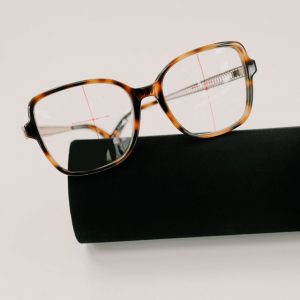We thank Dr Dan Fortenbacher for the context of this blog. This is based on Dr Dan’s blog on the VisionHelp website; ‘The importance of finding the hidden link between vision and reading to help the struggling child.’
A common question asked by parents
Parents of school-age children who have struggled with reading and learning are often looking for answers to many questions.
Most likely the most frequent question asked by parents is, “Why does my bright child continue to have difficulty with reading fluency and paying attention in the classroom?”
To provide some direction, two years ago the VisionHelp Group interviewed educational specialist, Wendy Rosen, author of the book, ‘The Hidden Link Between Vision and Learning, Why Millions of Learning Disabled Children are Misdiagnosed’.
In her video, ‘Misdiagnosing Learning Disabilities’, Wendy mentions the diagnosis, “Convergence Insufficiency”, a binocular vision dysfunction usually associated with a reduced convergence ability and commonly identified with the Red/Green Penlight Near Point of Convergence (NPC) test.
This test which can be done in about 30 seconds is one tool in the optometrist’s use to evaluate a patient’s vision skills.
Harvard Medical School
Harvard Medical School research published in the American Journal of Ophthalmology entitled: ‘Receded Near Point of Convergence is Not Diagnostic of Convergence Insufficiency’.
What they found was that the majority (89%) of post-concussed patients had a reduced near point of convergence (NPC).
Other results showed that these patients also had high incidence of;
- Poor visual tracking (oculomotor dysfunction)
- Reduced eye focusing problems (accommodative dysfunction) and
- Difficulties with eye teaming and
- Problems with focusing flexibility (binocular vergence/accommodative dysfunction)
The conclusions by the JAO Harvard researchers was that, “Because treatment options for the various oculomotor dysfunctions differ, it is prudent that these patients undergo a thorough examination of their vergence and accommodative systems so that an accurate diagnosis can be made and appropriate treatment prescribed.”
Complex visual problems should be addressed with a comprehensive evaluation process followed by a comprehensive model of treatment to meet the patient’s individual visual needs.
Vision Skills and Reading
Research shows that those children with vision-based reading and learning problems also have a high frequency of oculomotor, accommodative and binocular vergence/accommodative problems!
Therefore, the importance of assessing binocular vision skills, plus additional sensorimotor areas, is critical to assessing those children with reading and learning problems.
When the initial testing diagnosis identifies a reduced near point of convergence, it is essential to have a comprehensive sensorimotor and visual perceptual evaluation so that an accurate diagnosis can be made.
Vision Therapy
Once identified, as outlined by the American Optometric Association CPG-18, the best approach to treatment involves a comprehensive model of office-based vision therapy.
Vision therapy includes working one-on-one with a skilled vision therapist, sessions are typically 45-60 minutes, 1-2 times per week in-office with assigned home support activities.
Vision therapy should be provided in conjunction with lenses, prisms, and/or therapeutic tints prescribed and supervised by an experienced Doctor of Optometry in developmental vision and rehabilitation.









